What a Raccoon Eats
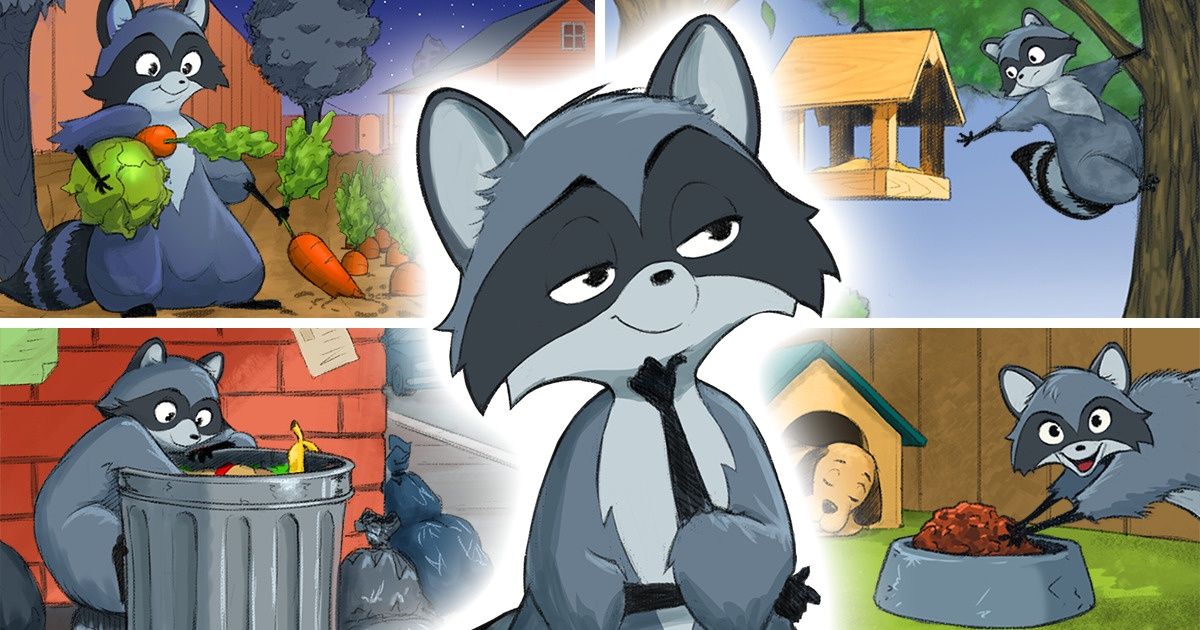
The diet of pet raccoons is quite varied — they can eat almost anything. There are no formulated raccoon diets that are pre-made and ready for you to purchase so it can be difficult to provide a proper, well-balanced diet for your pet raccoon. When you learn more about what raccoons prefer to eat in the wild, you will be better prepared to how to feed your pet at home.
5-Minute Crafts studied raccoons’ diets in the wild, in an urban environment, and at home.
In the wild
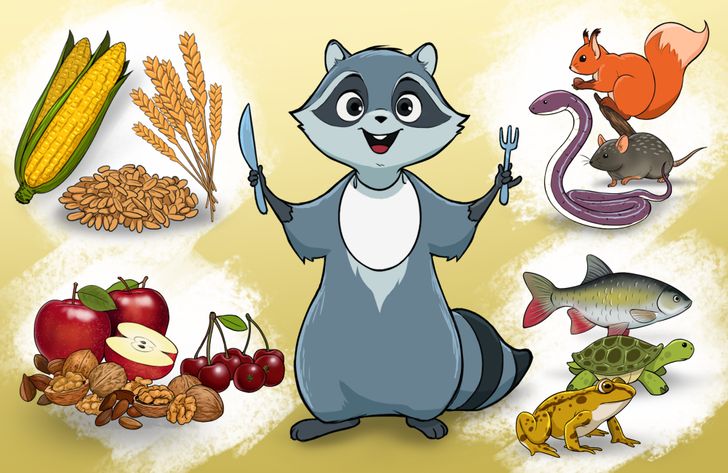
Raccoons are omnivorous and usually not fussy about food. When there are plenty of options, the animals may be somewhat picky and choose their favorite meal. However, raccoons aren’t usually that lucky, so generally speaking, they eat whatever is available.
Their food may be divided into a few main categories:
- Fruits, berries, and nuts. They are a raccoon’s undisputed favorites. At the end of the summer season, these animals begin to eat apples, cherries, and any other treats they can find. Walnuts, beechnuts, as well as other nuts, are especially important for their diet. This is a question of survival: this calorie-rich food helps them accumulate fat, which saves them in the winter.
- Grains and corn. These crops are easy to find and they can satisfy a raccoon’s hunger really well, especially if the animal is lucky enough to stumble across a farmer’s field. This place can be a real feast for the community of raccoons that live nearby.
- Meat. Usually, meat becomes part of a raccoon’s diet during the springtime when other foods like vegetables, fruits, and nuts are in short supply or unavailable. Small animals often become raccoons’ prey, because they are slow, easy to catch, and they are less likely to fight back. The most common prey are squirrels, rats, mice, snakes, rabbits, worms, and insects.
- Fish and other aquatic animals. Raccoons can easily swim to get to their prey. Their diet can be supplemented with fish, shellfish, frogs, crayfish, and even turtles.
- Carrion. From a raccoon’s point of view, carrion is an easy source of nourishment. It’s easily accessible, and no effort is needed to catch it. Raccoons are indeed omnivorous and won’t abstain even from this food.
In an urban environment
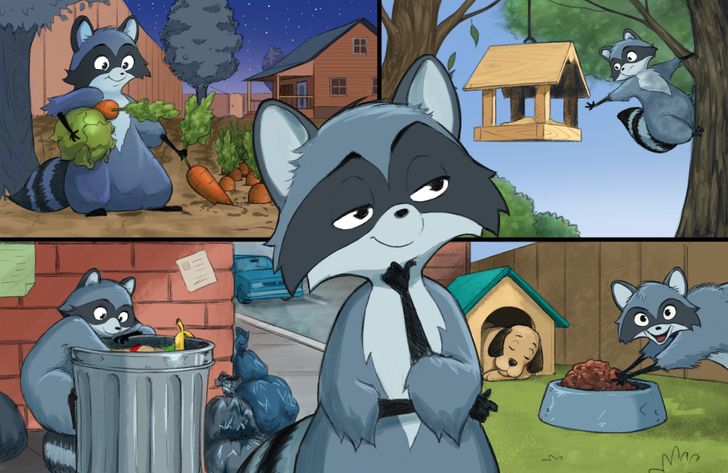
A raccoon always looks for easy ways to get food and this can be a problem for homeowners. When choosing between their favorite food and food that can be obtained without much effort, a raccoon will prefer the latter. This is the main reason why these animals can easily adapt to life in the city and why they visit houses so often.
There are a few sources of food that are in high demand among raccoons:
- Trash can. All remains of food that were thrown away are a delicacy for a raccoon. The smell of rotting food attracts this animal. It can sense it from afar and if it does, you can be sure the raccoon will visit your trash can at night.
- Garden and farm. Fruits and berries are a raccoon’s favorite food, even in the wild. So, they will be a raccoon’s first target in your garden. Besides, fish in a pond are also at risk of being eaten, as well as eggs in a hen house. The animal might also eagerly rummage around in the ground to find larvae and worms there. And if there is a compost heap in the garden, a raccoon will have a feast.
- Bird feeders. Even birds can become a raccoon’s prey, but they still need to be caught. While what people put in the feeders, like cereals and nuts, can become a good high-calorie meal.
- Pet bowls. This applies to those situations when pets eat outside. If so, chances are, a raccoon will come and try it. It’s important to notice this in time, otherwise, this striped guest may develop a habit. If so, sooner or later, it may pluck up the courage to start fighting with your pet for food.
At home
❗️ Many experts discourage keeping raccoons as pets because the raccoon is not a domesticated species. Raccoons may act unpredictably and aggressively and it’s extremely difficult to teach them to obey commands. Owning a raccoon is prohibited in some regions. Before getting a raccoon, make sure that it is allowed in your area.
Raccoon owners can control what their pet eats. This helps to ensure that the animal gets all the necessary nutrients. There are a few things you should keep in mind.
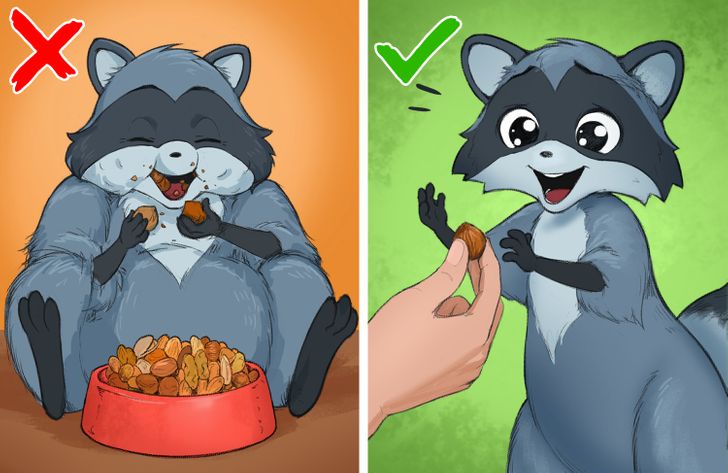
1. Make their diet diverse.
- Every day: Grain-free dog food is a good base for your pet’s diet.
- In addition to daily food: poultry, fish, mice, eggs, vegetables, and fruits.
- Nourishing food additives: live mealworms, earthworms, and other invertebrates.
💡 Nuts and seeds should only be used as a treat. Don’t feed them too often to your pet as they are high in fat.
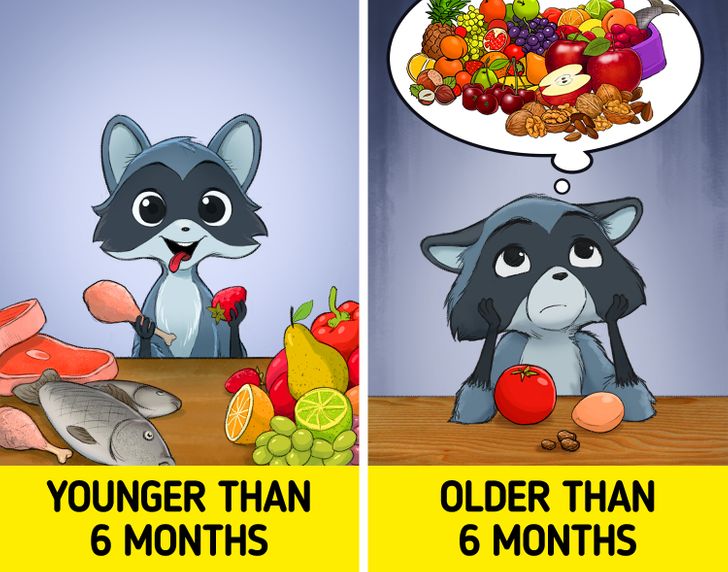
2. Control the amount of food they eat. A young raccoon can eat whatever it wants during the day. Once it reaches 6 months of age, start restricting its diet.
Give 1/8 cup of dry grain-free dog food 2-3 times a day. Add 1 to 2 tablespoons of fresh vegetables and fruits along with eggs, chicken, and insects. Their diet should be balanced to prevent excess weight gain.
💡 If you can no longer see the raccoon’s waist or feel its ribs, reduce the amount of food it eats.
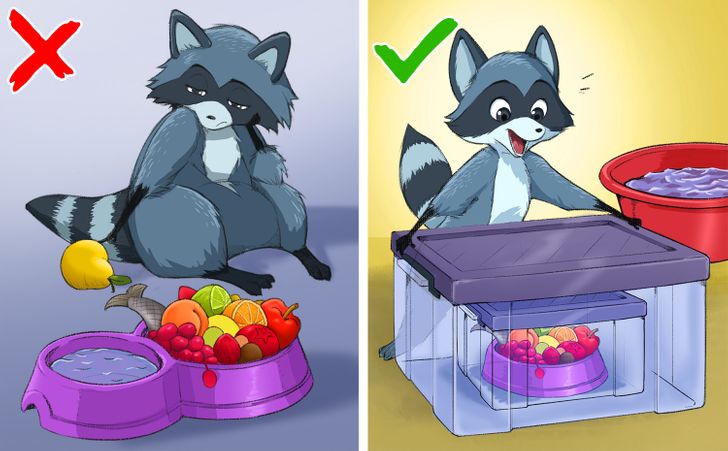
3. Think about serving size. A raccoon can eat from a bowl, but it’s in your best interest to provide it with a more sophisticated way of obtaining food. Simulate the way the animal gets food in the wild. For example, you can put crickets in a plastic container or put their food under crates or inside various items. The raccoon will love this kind of entertainment. The more time it spends on the extraction of food, the less time will be left for boredom and the destruction of your home.
💡 The raccoon likes to dip food in water before eating. Place a shallow container next to it while feeding. It’s going to get messy, so get ready to clean up afterward.